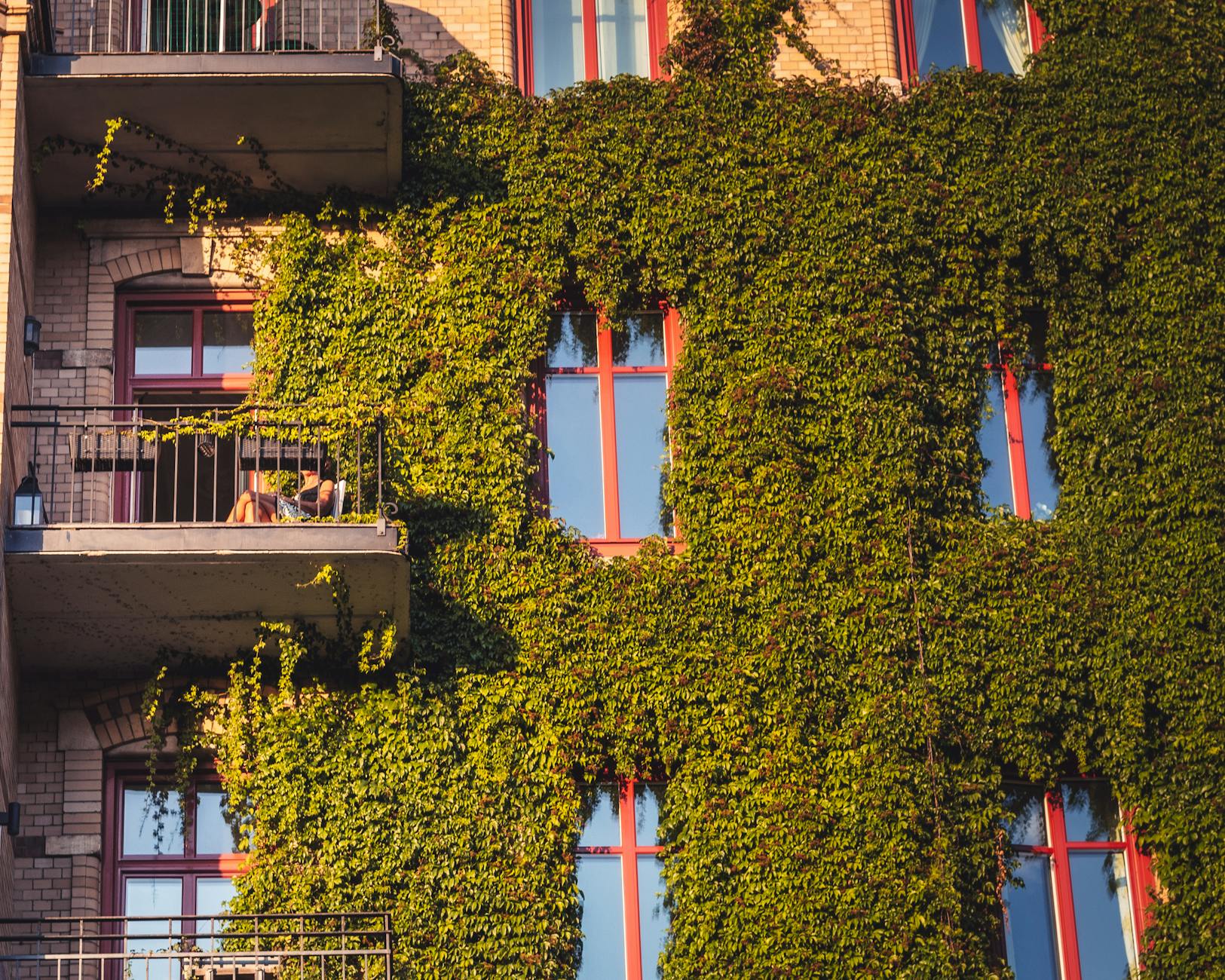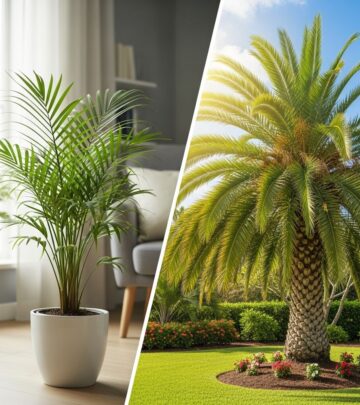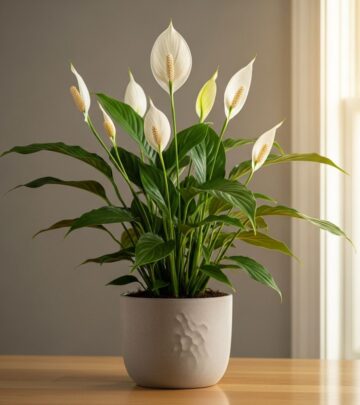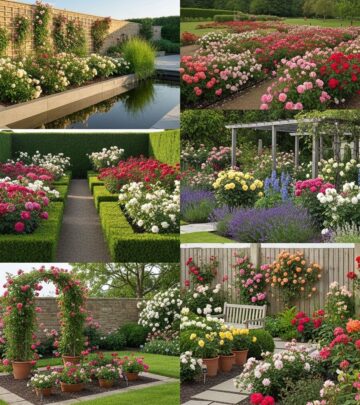Vertical Gardening Ideas: Expert Tips For Small Spaces
Transform small spaces into lush paradise using innovative methods and smart plant care.

Vertical Gardening: Growing Up Instead of Out
Vertical gardening is revolutionizing the way we think about garden design, especially for those with limited space. By growing plants upward rather than outward, gardeners can maximize their available area while creating stunning visual displays that transform ordinary spaces into extraordinary gardens. Whether you’re dealing with a small urban balcony, a compact backyard, or simply want to add dimension to your existing landscape, vertical gardening offers practical and aesthetic solutions that work in virtually any setting.
This innovative approach to gardening doesn’t just save space—it creates new opportunities for creative expression, improves accessibility, and can even enhance plant health by improving air circulation and reducing pest problems. In this comprehensive guide, we’ll explore everything you need to know about vertical gardening, from basic concepts to advanced techniques that will help you create your own thriving vertical paradise.
Benefits of Vertical Gardening
Embracing vertical gardening brings numerous advantages that extend beyond just maximizing space. Understanding these benefits can help you appreciate why this gardening style has become increasingly popular among both novice and experienced gardeners.
Space Efficiency
The most obvious advantage of vertical gardening is its ability to transform limited horizontal space into productive growing areas. By utilizing walls, fences, trellises, and other vertical structures, you can grow substantially more plants in the same footprint. This makes vertical gardening particularly valuable for urban dwellers, apartment residents, and those with small yards who still want to enjoy the pleasures of gardening.
Aesthetic Appeal
Vertical gardens add stunning visual interest and dimension to any space. They create living walls of foliage and flowers that can serve as natural artwork, screening, or focal points in your garden design. The vertical element draws the eye upward, creating a sense of height and expansiveness even in confined areas.
Improved Plant Health
Growing plants vertically often leads to healthier specimens. Improved air circulation reduces fungal diseases, while keeping fruits and foliage off the ground minimizes rot and pest damage. Many climbing plants naturally prefer vertical growth patterns and thrive when given appropriate support structures.
Easier Maintenance
Vertical gardens can be designed for easy maintenance, with plants positioned at comfortable working heights. This reduces the need for bending and kneeling, making gardening more accessible for people with mobility challenges. Harvesting, pruning, and pest management also become simpler when plants are more visible and within reach.
Environmental Benefits
Vertical gardens contribute positively to the environment, especially in urban settings. They help insulate buildings, reducing energy costs; filter air pollutants; capture rainwater; and create habitats for beneficial insects and birds. In hot climates, they can significantly cool surrounding areas through transpiration and shade.
Types of Vertical Gardens
Vertical gardening encompasses several distinct approaches, each with its own characteristics and suitable applications. Understanding these different types will help you choose the right vertical gardening system for your specific needs and space.
Living Walls
Also known as green walls, living walls are fully covered vertical surfaces that create lush tapestries of plants. These sophisticated systems typically use modular panels, fabric pockets, or specialized containers attached to a supporting structure. Living walls often incorporate irrigation systems and can be installed both indoors and outdoors, transforming blank walls into breathtaking living art installations.
Trellis and Support Systems
The simplest form of vertical gardening involves providing climbing plants with structures to grow on. Trellises, arbors, pergolas, and obelisks create vertical growing spaces for vines and climbing plants. These systems work with plants that naturally climb using tendrils, twining stems, or clinging roots, as well as plants that need to be tied or trained to grow upward.
Container Vertical Gardens
This approach uses stacked, tiered, or wall-mounted containers to create vertical growing spaces. Options include tower planters, pocket planters, recycled pallet gardens, and wall-mounted pots. Container vertical gardens offer flexibility and are excellent for renters or those who want the ability to rearrange their garden periodically.
Espalier
Espalier is the ancient art of training trees and woody plants to grow in a flat plane, often against a wall or fence. This technique not only saves space but creates stunning architectural elements in the garden. While traditionally used for fruit trees, espalier can be adapted for many ornamental plants as well.
Planning Your Vertical Garden
Successful vertical gardens begin with careful planning. Consider these essential factors before selecting your plants and structures to ensure your vertical garden thrives.
Location Assessment
Start by analyzing your available space. Note the direction it faces, how many hours of sunlight it receives, and any existing structures that could support vertical elements. South-facing walls typically receive the most sunlight, making them ideal for sun-loving plants, while north-facing areas may better accommodate shade-tolerant species.
Weight and Structural Considerations
Vertical gardens can become quite heavy, especially when plants mature and soil is saturated with water. Ensure your supporting walls or structures can bear the weight of your planned garden. For wall-mounted systems, use appropriate anchoring methods and consider waterproofing barriers to protect building materials.
Water and Irrigation Planning
Vertical gardens often dry out faster than horizontal beds due to gravity and increased exposure to wind. Plan your irrigation system carefully, considering options like drip irrigation, self-watering systems, or strategically positioned reservoirs. For larger installations, automated irrigation systems with timers can ensure consistent moisture levels.
Maintenance Access
Think about how you’ll reach your plants for watering, fertilizing, pruning, and harvesting. Ensure that all areas of your vertical garden are accessible, either directly or with the aid of a stable ladder or step stool. For very tall installations, consider designing in sections that can be maintained independently.
Plant Selection for Vertical Gardens
Choosing appropriate plants is crucial for vertical gardening success. While many plants can adapt to vertical growing, some are particularly well-suited to these systems.
Climbing Plants and Vines
These natural climbers are ideal for trellises, arbors, and other support structures. Consider these popular options:
- Flowering vines: Clematis, jasmine, morning glory, passionflower
- Edible climbers: Pole beans, peas, cucumbers, certain squash varieties
- Ornamental vines: Ivy, climbing roses, honeysuckle, wisteria
Plants for Living Walls
These plants typically have shallow root systems and can thrive in the limited soil volume of living wall systems:
- Succulents: Sedums, echeverias, sempervivums
- Small perennials: Heuchera, small ferns, ajuga, creeping thyme
- Trailing plants: Pothos, philodendron, string of pearls
- Small herbs: Thyme, oregano, mint
Container-Friendly Plants
For stacked or wall-mounted containers, look for plants that stay relatively compact:
- Leafy greens: Lettuce, spinach, kale
- Herbs: Basil, parsley, chives, rosemary
- Strawberries
- Small ornamentals: Pansies, petunias, impatiens
Matching Plants to Conditions
Consider each plant’s needs for light, water, and soil when planning your vertical garden. Group plants with similar requirements together to simplify care. Remember that plants at the top of a vertical garden may experience different conditions than those at the bottom—upper areas tend to be drier and receive more light, while lower sections may be shadier and retain more moisture.
DIY Vertical Garden Structures
Creating your own vertical gardening structures can be both economical and rewarding. Here are some popular DIY approaches that can be customized to suit your space and style preferences.
Repurposed Pallet Gardens
Wooden pallets can be transformed into effective vertical planters with minimal effort. Begin by selecting a heat-treated (not chemically treated) pallet in good condition. Sand any rough edges, then attach landscape fabric to the back and sides, creating planting pockets. The pallet can be positioned vertically against a wall after planting and allowing roots to establish while horizontal.
Pocket Planters
Create fabric pocket planters using heavy-duty materials like canvas, felt, or specialized landscape fabric. These can be sewn with multiple pockets and mounted on walls or fences. Alternatively, repurpose shoe organizers or specialized pocket planter products for an even simpler solution.
Tiered and Stacked Planters
Build stepped or pyramid-style planters using wood, concrete blocks, or recycled containers. These structures create multiple planting levels while maintaining accessibility. For a simpler approach, stack gradually smaller containers on top of each other, allowing plants to cascade down the sides.
Custom Trellises
Construct trellises from bamboo, wood, metal pipe, or even repurposed materials like bicycle wheels or old bed frames. Consider the weight of mature plants when selecting materials and attachment methods. Ensure your trellis is securely anchored, especially in windy locations.
Maintenance and Care
Proper maintenance ensures your vertical garden remains healthy and attractive throughout the growing season and beyond.
Watering Techniques
Vertical gardens typically require more frequent watering than ground-level plantings. Check moisture levels regularly, especially during hot or windy weather. Consider installing drip irrigation systems with timers for consistent watering. For manual watering, start at the top and work downward, allowing excess water to reach lower plants.
Fertilization
Plants in vertical systems often have limited soil volume, making regular fertilization essential. Use liquid fertilizers for quick uptake, applying at half the recommended strength but more frequently. Slow-release fertilizers can also work well, reducing the frequency of application. For living walls and intense plantings, consider incorporating water-soluble fertilizers into your irrigation system.
Pruning and Training
Regular pruning maintains the health and appearance of your vertical garden. Remove dead or diseased growth promptly, and trim back overly vigorous plants to prevent them from overwhelming neighbors. For climbing plants, guide new growth onto supports and remove wayward stems. With living walls, periodic thinning prevents overcrowding and maintains the designed appearance.
Seasonal Considerations
Adapt your care routine to seasonal changes. In hot weather, increase watering frequency and consider providing afternoon shade for sensitive plants. Before winter, remove annual plants, cut back perennials as appropriate for your climate, and protect irrigation systems from freezing. Some vertical structures may need additional support or protection during stormy seasons.
Creative Design Ideas
Vertical gardens offer endless possibilities for creative expression. Here are some inspiring approaches to consider for your own space.
Color and Texture Themes
Create visual impact by designing your vertical garden around specific color schemes or textural contrasts. Monochromatic designs using variations of a single color can be surprisingly dramatic, while complementary color combinations create vibrant energy. Alternatively, focus on contrasting textures—mixing feathery ferns with broad-leaved plants or incorporating plants with distinctive architectural forms.
Edible Vertical Gardens
Combine functionality with beauty by incorporating edible plants into your vertical design. Herbs, leafy greens, strawberries, and many compact vegetable varieties thrive in vertical systems. Consider creating a kitchen garden near your cooking space, with herbs and salad ingredients always within reach.
Indoor Vertical Gardens
Bring the vertical gardening concept indoors with living walls that purify air and add natural beauty to interior spaces. Focus on houseplants suited to your indoor light conditions, and ensure proper waterproofing to protect walls and floors. Indoor vertical gardens can range from simple wall-mounted containers to elaborate installations with built-in irrigation systems.
Frequently Asked Questions
Q: How often should I water my vertical garden?
A: Vertical gardens typically need more frequent watering than traditional gardens as they tend to dry out faster due to gravity and increased exposure to air flow. Check the soil moisture every few days, and during hot weather, you might need to water daily. Installing a drip irrigation system with a timer can make watering more consistent and convenient.
Q: What are the best plants for beginners to use in vertical gardens?
A: For beginners, start with resilient, easy-care plants such as succulents, pothos, spider plants, herbs like rosemary and thyme, or ornamentals like trailing petunias and geraniums. These plants tolerate varying conditions and are forgiving of occasional lapses in care, making them perfect for those new to vertical gardening.
Q: Can I build a vertical garden if I rent my home?
A: Absolutely! Consider freestanding structures like tower planters, shepherd’s hooks with hanging baskets, or movable trellis systems that don’t require permanent installation. Wall-pocket organizers can be hung with removable hooks, and balcony railings can support container gardens with special brackets that don’t require drilling.
Q: How do I prevent my vertical garden from becoming too heavy?
A: Use lightweight containers and growing media designed for vertical applications. Incorporate materials like perlite, vermiculite, or coir into your soil mix to reduce weight while maintaining moisture retention. Consider the weight capacity of your supporting structure during planning, and distribute the weight by mounting containers directly to studs or using appropriate wall anchors.
Q: Can vertical gardens work in areas with limited sunlight?
A: Yes, by selecting appropriate shade-tolerant plants. For areas with 2-4 hours of indirect light, consider ferns, mosses, heucheras, hostas, and shade-loving begonias. Even edibles like lettuce, spinach, and certain herbs can thrive in partial shade. If necessary, supplement with grow lights for indoor vertical gardens in particularly dark spaces.
References
- https://rootsandrefuge.com/vertical-gardening-on-a-budget/
- https://www.singulargreen.com/en/vertical-gardens-basic-guide-on-vertical-gardening/
- https://sarabendrick.com/create-your-own-vertical-garden-step-by-step-guide-to-building-a-beautiful-and-sustainable-green-wall/
- https://outlandliving.com/blogs/news/your-full-hands-on-guide-to-vertical-gardening-tutorial-ideas-and-designs
- https://www.sunset.com/home-garden/edible-gardening/vertical-vegetable-garden
Read full bio of Srija Burman












